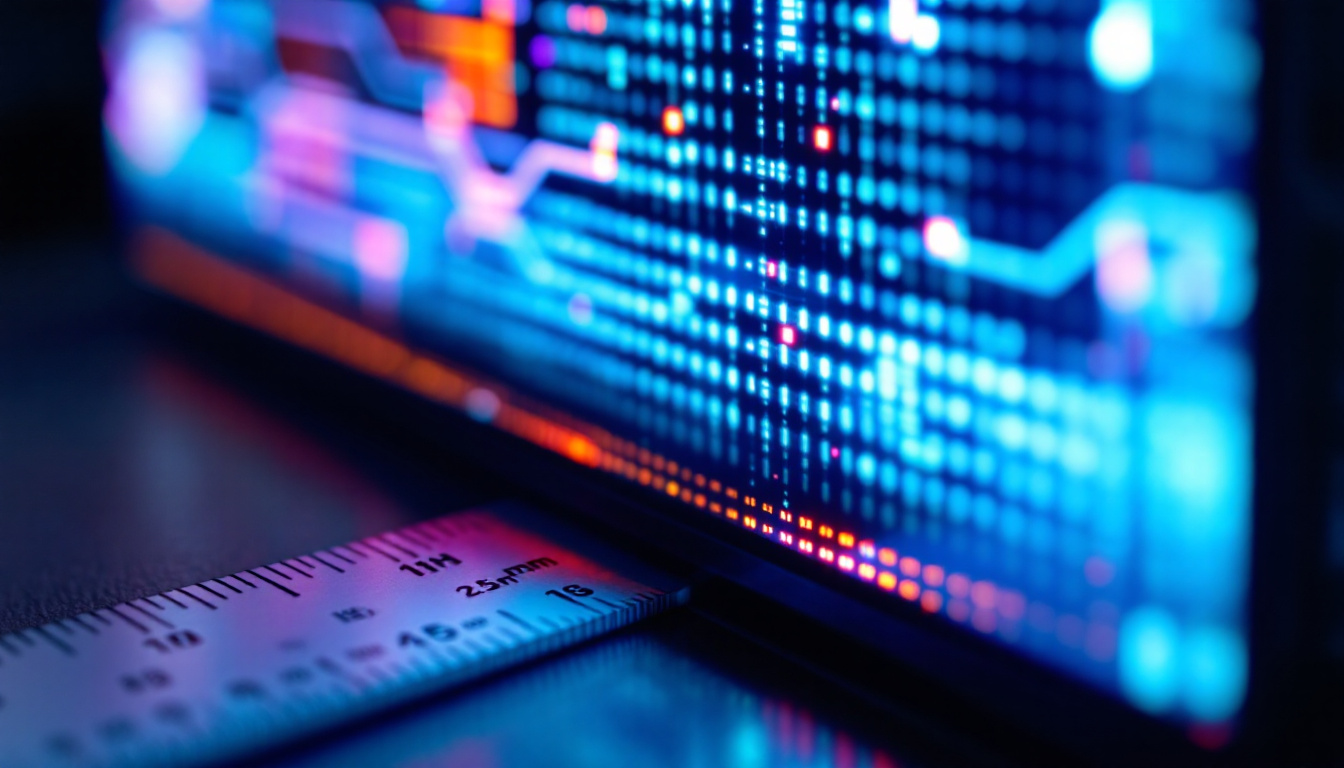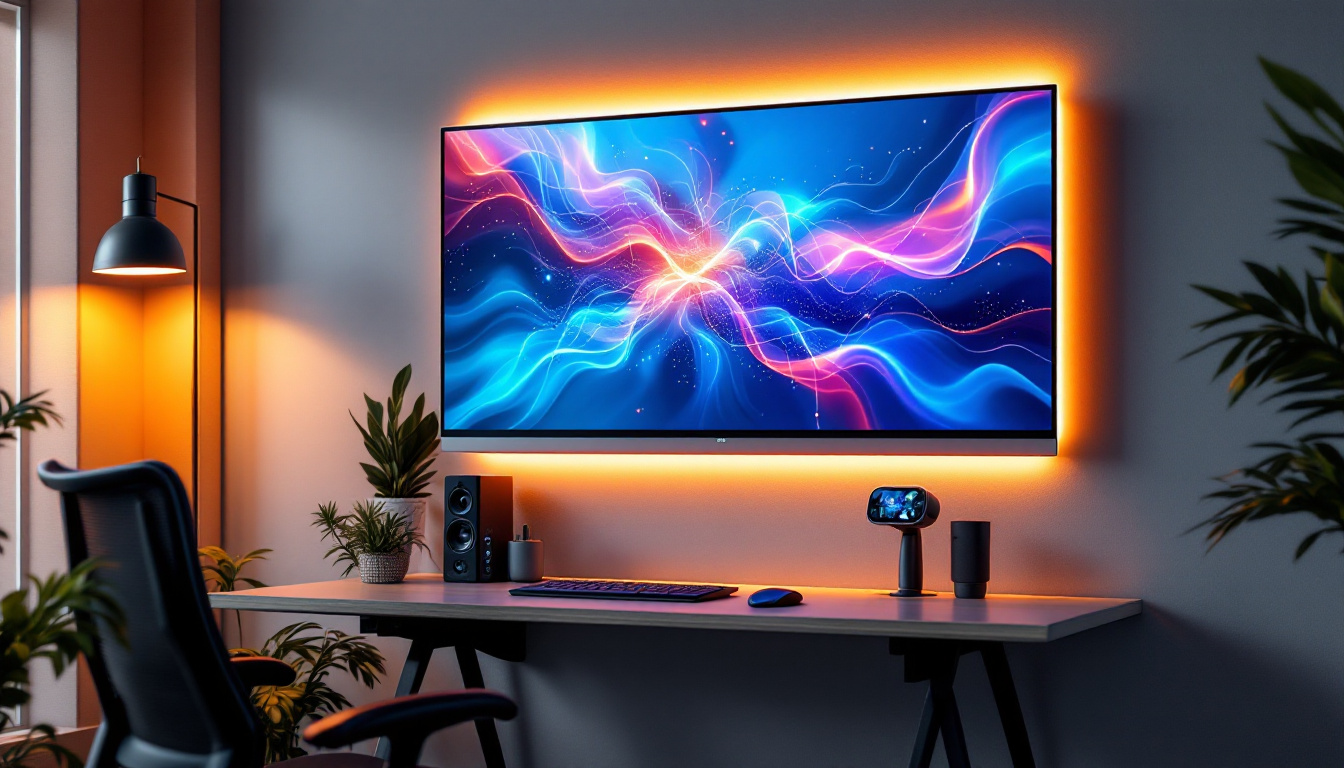In the digital age, calculators have evolved significantly, becoming more portable and user-friendly. One of the most notable features of modern calculators is the LED display. This article delves into the intricacies of LED displays in portable calculators, exploring their advantages, functionalities, and the technology behind them.
Understanding LED Displays
LED, or Light Emitting Diode, displays are a popular choice for portable calculators due to their efficiency and clarity. Unlike traditional LCD screens, LED displays offer brighter visuals and better contrast, making them easier to read in various lighting conditions. This enhanced visibility is particularly advantageous in outdoor settings or brightly lit classrooms, where glare can often obscure information on standard screens.
How LED Displays Work
LED displays function by using a series of diodes that emit light when an electric current passes through them. Each diode can produce different colors, and when combined, they create a full spectrum of colors. In calculators, these displays typically use a single color, often green or red, to present numerical data clearly. The simplicity of this color scheme not only aids in readability but also reduces the complexity of the circuitry, allowing for more compact and lightweight designs.
The technology behind LED displays allows for quick response times, which is essential for users who require immediate feedback while performing calculations. This rapid response is particularly beneficial in educational settings or professional environments where time is of the essence. Furthermore, the low latency of LED technology ensures that users can perform rapid calculations without experiencing any lag, which can be crucial during timed exams or high-pressure work situations.
Advantages of LED Displays in Calculators
One of the primary advantages of LED displays is their energy efficiency. They consume less power compared to traditional LCD screens, which extends the battery life of portable calculators. This feature is particularly important for students and professionals who rely on their calculators for extended periods. In fact, many modern calculators equipped with LED displays can operate for months on a single set of batteries, significantly reducing the frequency of replacements and contributing to a more sustainable use of resources.
Additionally, LED displays are more durable and resistant to damage from impacts or drops. This robustness makes them ideal for use in various environments, from classrooms to construction sites, where devices may be subjected to rough handling. Moreover, the solid-state nature of LED technology means that there are no fragile components like liquid crystals that can leak or break, further enhancing the longevity of these devices. This durability not only provides peace of mind for users but also translates to lower long-term costs, as there is less need for repairs or replacements over time.
Another noteworthy benefit of LED displays is their excellent visibility in low-light conditions. The brightness of the emitted light ensures that users can easily read the display even in dimly lit environments, such as during nighttime study sessions or in poorly lit offices. This adaptability enhances the overall user experience, making LED calculators a versatile tool for a wide range of applications, from academic pursuits to professional tasks.
Comparing LED and LCD Displays
While LED displays are becoming increasingly popular, it is essential to understand how they compare to LCD (Liquid Crystal Display) screens, which have been the standard in calculators for years. Each display type has its strengths and weaknesses, influencing user preference.
Brightness and Visibility
One of the most significant differences between LED and LCD displays is brightness. LED displays generally provide superior brightness levels, which can enhance visibility in bright environments. This feature is particularly advantageous for outdoor use or in well-lit classrooms where glare can be an issue.
In contrast, LCD screens may struggle in such conditions, often requiring additional features like backlighting to improve visibility. However, these enhancements can lead to increased power consumption, which is a drawback for portable devices. Moreover, the quality of the backlighting can vary significantly among different LCD models, with some offering uneven illumination that can detract from the overall viewing experience. Users may find that investing in a higher-quality LCD with advanced backlighting technologies, such as edge-lit or full-array backlighting, can mitigate some of these visibility issues, although at a higher price point.
Color Accuracy and Contrast
When it comes to color accuracy and contrast, LED displays typically outperform LCDs. The ability of LEDs to produce vibrant colors and deep blacks enhances the overall readability of the display. This is particularly beneficial for calculators that offer graphical representations or complex equations, where clarity is paramount.
On the other hand, LCDs can sometimes appear washed out, especially when viewed from an angle. This limitation can hinder the user experience, particularly in scenarios where quick, accurate readings are necessary. Additionally, the color gamut of an LED display tends to be broader, allowing for more accurate and vivid color reproduction. This feature is crucial for users who rely on color-coded data or graphs, as it ensures that the information is not only legible but also visually appealing. Furthermore, advancements in LED technology, such as Quantum Dot and OLED, are pushing the boundaries of color accuracy even further, making them an increasingly attractive option for users who demand the best visual performance from their devices.
Applications of LED Displays in Portable Calculators
LED displays in portable calculators are not just a technological advancement; they also enhance usability across various applications. From basic arithmetic to complex scientific calculations, these displays cater to a wide range of users.
Educational Use
In educational settings, calculators with LED displays are favored for their clarity and ease of use. Students can quickly read results, which aids in learning and comprehension. The bright display ensures that even in crowded classrooms, students can see their calculations without straining their eyes.
Moreover, the durability of LED displays makes them suitable for younger students who may not handle devices with care. This resilience ensures that calculators can withstand the rigors of daily classroom use, providing a reliable tool for learning. In addition to their physical robustness, LED calculators often come equipped with features tailored for educational purposes, such as programmable functions and graphing capabilities. These features not only engage students but also help them visualize mathematical concepts, making abstract ideas more tangible and easier to grasp.
Professional Environments
In professional environments, such as engineering or finance, the precision and quick response of LED displays are invaluable. Professionals often require immediate calculations and clear visibility of results, especially when working under tight deadlines.
Additionally, the energy efficiency of LED displays means that calculators can be used for extended periods without the need for frequent battery replacements, a significant advantage in fast-paced work settings. Many modern LED calculators also incorporate advanced functionalities, such as statistical analysis and financial modeling tools, which are essential for professionals in data-driven industries. This integration of sophisticated features into a compact device not only enhances productivity but also streamlines workflows, allowing users to focus on their tasks without the distraction of cumbersome technology.
Future Trends in Calculator Displays
The evolution of display technology is ongoing, and LED displays are no exception. As technology advances, several trends are emerging that could shape the future of portable calculators.
Integration with Smart Technology
One of the most exciting trends is the integration of LED displays with smart technology. Future calculators may feature connectivity options, allowing users to sync their devices with smartphones or computers. This capability could enable users to perform complex calculations and store results more efficiently.
Moreover, smart calculators could incorporate features like cloud storage, enabling users to access their data from anywhere. This integration would enhance the utility of portable calculators beyond simple arithmetic, making them essential tools for students and professionals alike.
Advancements in Energy Efficiency
As environmental concerns continue to grow, manufacturers are focusing on developing even more energy-efficient LED displays. Innovations in battery technology and display design could lead to calculators that last significantly longer on a single charge, reducing waste and improving sustainability.
These advancements would not only benefit the environment but also enhance the user experience, allowing for uninterrupted use during critical tasks.
Choosing the Right Portable Calculator
When selecting a portable calculator, it is essential to consider various factors, including the type of display. Understanding the differences between LED and LCD displays can help users make informed decisions that suit their specific needs.
Assessing User Needs
Before purchasing a calculator, users should assess their needs. For students, a basic model with an LED display may suffice for everyday calculations. However, for professionals or advanced students, a scientific or graphing calculator with a high-quality LED display may be necessary for more complex tasks.
Additionally, considering the environment in which the calculator will be used is crucial. For outdoor use or in bright settings, an LED display’s superior visibility can make a significant difference in usability.
Budget Considerations
Budget is another important factor when choosing a portable calculator. While LED displays offer numerous advantages, they may come at a higher price point than their LCD counterparts. Users should weigh the benefits of an LED display against their budget constraints to find the best fit.
Ultimately, investing in a quality calculator with an LED display can enhance the user experience, providing clarity and efficiency for various tasks.
Conclusion
LED displays have transformed the landscape of portable calculators, offering numerous advantages over traditional LCD screens. Their brightness, durability, and energy efficiency make them ideal for educational and professional use. As technology continues to evolve, the future of portable calculators looks promising, with potential advancements that could further enhance functionality and user experience.
When choosing a portable calculator, understanding the benefits of LED displays can guide users in selecting the right device to meet their needs. Whether for education, work, or personal use, a calculator with an LED display is a valuable tool that can simplify complex calculations and improve productivity.
Discover LumenMatrix’s Advanced LED Display Solutions
Embrace the future of visual technology with LumenMatrix, a pioneer in the field of LED displays. Whether you’re seeking to enhance educational environments, elevate professional workspaces, or create dynamic visual experiences, LumenMatrix offers a comprehensive range of LED display solutions tailored to your needs. From Indoor and Outdoor LED Wall Displays to innovative options like Vehicle LED Displays and LED Transparent Displays, LumenMatrix is committed to revolutionizing the way you communicate visually. Check out LumenMatrix LED Display Solutions today and experience the power of advanced LED technology.































